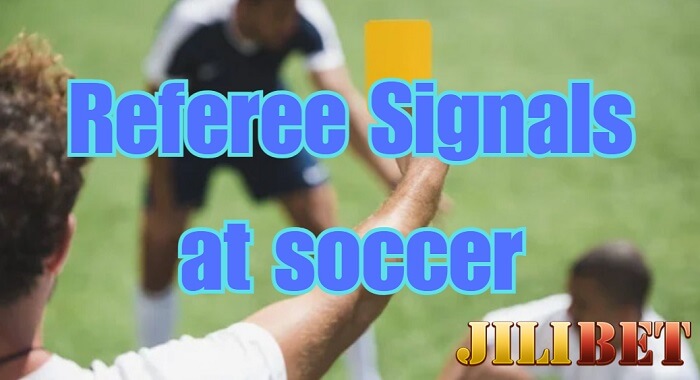In every soccer match, there’s one person who doesn’t score goals, doesn’t defend, and rarely runs the full length of the field—but controls the entire game: the referee. And when that ref pulls out a yellow or red card, everything stops. Players panic. Coaches yell. Fans scream. But what do those cards really mean? If you’ve ever been confused by why a player got a card, or what kind of crime deserves a red vs. a yellow, don’t worry. Let’s clear it up once and for all. Whether you’re watching a Premier League clash or betting live on jilibet, knowing what those cards mean is key to understanding the game’s momentum and drama.
Understanding the Purpose of Referee Signals
Referee signals are the language of sports. They communicate the rules, penalties, and warnings to all participants, ensuring fair play and maintaining order on the field. These signals are standardized across various sports, although the specific offenses and penalties may vary. The primary purpose of these signals is to:
- Maintain Fair Play: Referees use cards to address infractions that disrupt the flow of the game or jeopardize the safety of players.
- Establish Clear Communication: The use of visual signals avoids ambiguity and ensures that everyone, from players to coaches to spectators, understands the referee’s decisions.
- Enforce Rules: Cards serve as a tangible record of infractions, allowing for consistent application of the rules throughout the match.
- Manage Player Conduct: They act as a deterrent to unsporting behavior, encouraging players to maintain a professional attitude.

Yellow Card: The Cautionary Tale
Let’s start with the yellow card. This card is an official warning from the referee.
What Does a Yellow Card Mean?
A yellow card, also called a caution or booking, is like a slap on the wrist. It tells a player they’ve done something wrong and need to clean up their act. It’s a warning for unsporting behavior.
Common Yellow Card Offenses
So, what gets a player a yellow card? Referees hand them out for things like:
- Persistent infringement: Repeatedly breaking the rules.
- Dissent: Arguing with the referee’s decisions.
- Unsporting behavior: Actions that are against the spirit of the game.
- Delaying the restart of play: Wasting time.
These actions are annoying and disrupt the flow, hence the card!
What Is a Red Card?
A red card is the soccer version of “you’re fired.” When a player gets a red, they’re ejected from the game immediately. And their team must play with one fewer player for the rest of the match.
No substitutions allowed. It’s a big deal.
A player can receive a red card in two ways:
- Direct red card: For a serious offense.
- Two yellow cards: Two warnings add up to a red.
Offenses that can lead to a direct red:
- Violent conduct (e.g., punching, kicking off the ball)
- Serious foul play (e.g., dangerous tackle that endangers an opponent)
- Spitting at an opponent
- Denying a clear goal-scoring opportunity by handball or foul
- Using offensive, insulting, or abusive language/gestures
The Nuance of Interpretation
While the basic principles of yellow and red cards are straightforward, their application can be nuanced. Referees must consider the context of the offense, the player’s history, and the overall atmosphere of the game when making their decisions. This interpretation can sometimes lead to debate and controversy.
Why It Feels So Subjective
Not all yellow or red cards are crystal-clear. Sometimes, what seems like a soft foul gets a yellow. Other times, a brutal-looking tackle gets only a warning. Why?
Because referees have discretion. They judge based on intent, danger, and the context of the match. VAR can help in major tournaments, but for many games, it’s still down to the human eye.
That’s why two similar fouls might get different outcomes.
Final Whistle: Cards Matter
Yellow and red cards are integral components of sports officiating, ensuring the rules are followed and players maintain a professional attitude. While the application may be nuanced, the core principles of fair play and safety are paramount. The use of cards, coupled with the ever-evolving role of VAR, continues to shape the landscape of sports competitions, ultimately aiming for a more just and enjoyable experience for all participants. Understanding these signals provides valuable insight into the dynamics of the game, fostering a deeper appreciation for the complexities of sports officiating.Now you know the meaning of yellow cards, red cards, and other common referee signals. Knowing what these signals mean helps you enjoy the game more. Use this knowledge to become a more informed and engaged soccer fan.Whether it’s yellow or red, a card can totally change the rhythm, psychology, and outcome of a match. Understanding the rules behind them helps you watch the game smarter—and yell at the TV a little more accurately.
- Professional Online Baccarat Strategy: Practical Application of Data Logic and Bankroll Control - December 15, 2025
- Mastering Fishing Games: How the Bullet Attrition Rate Model Helps You Identify the Most Cost-Efficient Targets - December 12, 2025
- Online Casino Risk Models Explained: How Platforms Use Fraud Detection Algorithms to Identify Advantage Players - December 10, 2025


